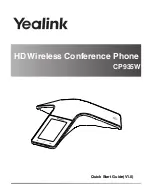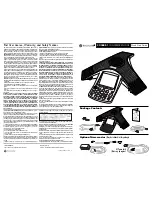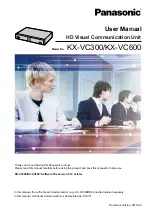
©2008 Hamtronics, Inc.; Hilton NY; USA. All rights reserved. Hamtronics is a registered trademark. Revised: 6/3/10
- Page 1 -
GENERAL INFORMATION.
The T301 is a single-channel vhf fm exciter
designed to provide 2 to 3½ Watts continuous
duty output into a 50 ohm antenna system in
the 144 MHz ham band or 148-174 MHz com-
mercial band. Another model covers the 216-
226MHz band or the 220-230MHz band. Op-
erating power is +13.6 Vdc ±10% at 450-600
mA. There are several models, which have
minor variations in parts and microcontroller
programming, to provide coverage as shown
in table 1. Channel frequency is controlled by
a synthesizer with DIP switch channel setting.
A temperature controlled xtal oscillator
(TCXO) provides a temperature stability of
±2ppm over a temperature range of -30°C to
+60°C.
The Exciters are designed for narrow-band
fm with ±5 kHz deviation. The audio input will
accept a standard low-impedance dynamic mi-
crophone or any low-impedance audio source
capable of providing 40mV p-p minimum into
a 1K load.
INSTALLATION.
Mounting.
The four mounting holes provided near
the corners of the board can be used with
standoffs to mount the board in any cabinet
arrangement. (See catalog for A26 PC Mount-
ing Kits and A88 Cabinets.) There is no need
for a shielded cabinet except if the exciter is
used in a repeater or in duplex service; how-
ever, shield the exciter from any power ampli-
fier.
Electrical Connections.
Power and input audio or data signals
should be connected to the solder pads on the
BOTTOM
of the board with #22 solid hookup
wire. Be very careful not to route the wiring
near the right hand side of the board, which
contains sensitive loop filter and vco circuits
which could pick up noise from the wiring.
Also avoid routing wiring along the rf amplifier
circuits on the top of the board or under the
board. Keep all wiring at the left and bottom
sides of the board.
Power.
The T301 Exciter operates on +13.6 Vdc at
about 450-600 mA. A well regulated power
supply should be used. Positive and negative
power leads should be connected to the ex-
citer at E1 and E3. Be sure to observe polarity,
since damage to the transistors will occur if
polarity is reversed.
When you key the exciter, it takes about
400-500 milliseconds for the synthesizer to
come on. This delay normally is not a prob-
lem. However, if you have an application
which requires the rf output to be available in-
stantly, you can apply power to the synthe-
sizer all the time and only key the power to
the amplifier stages.
Repeaters are one application where you
might notice the delay; however, if you use a
normal tail time setting on the repeater, the
carrier will stay on all the time during a qso
and only go off when everyone is finished us-
ing the repeater.
Normally, E1 and E4 are jumpered to-
gether by a trace on the bottom of the pc
board. If you want to use E4 independently,
use a tool to make a cut through that trace.
Then, connect E4 to constant +13.6Vdc and
connect E1 to the keying switch, e.g., the
keyed B+ output of one of our repeater con-
troller modules. Make sure that the keying
circuit you use is capable of supplying up to
600 mA needed for E1. Current drain to
power the synthesizer circuits separately at E4
is only about 30 mA.
Antenna Connections.
The antenna connection should be made
to the pc board with an RCA plug of the low-
loss type made for rf. We sell good RCA plugs
with cable clamp. See A5 plug on website.
If you want to extend the antenna con-
nection to a panel connector, we recommend
using a short length of RG-174/u coax with the
plug and keep the pigtails very short.
We do
not
recommend trying to use direct
coax soldered to board or another type of
connector. The method designed into the
board results in lowest loss practical. When
soldering the cable, keep the stripped ends as
short as possible.
Audio Connections.
The T301 Exciter is designed for use with a
low impedance dynamic mic (500-1000 ohms)
or any low impedance audio source capable of
supplying 40 mV p-p across 1000
Ω
. The mi-
crophone should be connected with shielded
cable to avoid noise pickup. Higher level au-
dio inputs, such as from a repeater controller,
may not need to be shielded. Mic connections
are made to E2 and E3 on the pc board.
Be
sure to dress the audio cable away from any
RF circuits.
RF Output Connection.
To connect to the pc board, use a good
quality RCA plug with a metal cable clamp and
a short center pin. If you cannot find a suit-
able plug, you can solder coax directly to the
pc board, but keep the pigtails as short as pos-
sible to minimize loss.
Subaudible Tone Connections.
If you want to transmit a CTCSS
(subaudible) tone, you can connect the output
of the tone encoder directly to CTCSS INPUT
pad E5. This is a direct input to the modulator
and bypasses all the audio processing.
Because this input is dc coupled, it is nec-
essary to check the CTCSS Encoder unit to be
sure the its output is ac coupled (has a block-
ing capacitor). Otherwise, the dc center volt-
age of the modulator will be upset. Note that
the CTCSS Encoders we manufacture already
have such a blocking capacitor; so nothing
special is required. However, if you use some
other encoder which does not have a blocking
capacitor built in, it is necessary to add a 0.1µF
capacitor in series with the input to E5 on the
Exciter.
The level of the subaudible tone should be
set no higher than about 300 Hz deviation for
best results. Otherwise, a buzz may be heard
on the audio at the receiver. Good CTCSS de-
coders can easily detect tones with less than
100Hz deviation.
ADJUSTMENTS.
Frequency Deviation Adjustments.
Set deviation limit pot R35 for the proper
maximum deviation (normally ±5kHz) and
then set af gain pot R26 for gain just sufficient
to drive the audio up to full deviation on
peaks. Since the deviation limit pot is after
the limiter, it sets the absolute maximum de-
viation assuming the input signal is driven into
limiting.
To adjust the audio controls, start by set-
ting the af gain pot to maximum. Apply power
to the exciter and talk into the microphone or
apply audio of normal expected level to the
exciter.
If the unit is setup with tones from a ser-
vice monitor, use a tone frequency of 1000
Hz. Observe the deviation scope on a service
monitor, and adjust the deviation limit pot for
a peak deviation of 5 kHz. Then, adjust the af
gain pot so that the exciter deviation just
HAMTRONICS
®
T301 VHF FM EXCITER, REV F:
INSTALLATION, OPERATION, & MAINTENANCE
Table 1. Quick Specification Reference
Model T301-1
138.000 - 148.235 MHz
Model T301-2
144.000 - 154.235 MHz
Model T301-3
154.200 - 164.435 MHz
Model T301-4
164.400 - 174.635 MHz
Model T301-5
216.000 - 226.235 MHz
Model T301-6
220.000 - 230.235 MHz
Operating Voltage: +13.6Vdc ±10%
Operating Current:
450 mA @ 2W out
550 mA @ 3W out
650 mA @ 4W out
Operating Current, Synth only: 30 mA
Audio Input: 40 mV p-p min. into 1K
Ω
Size: 5 in. W x 3 in. D


























